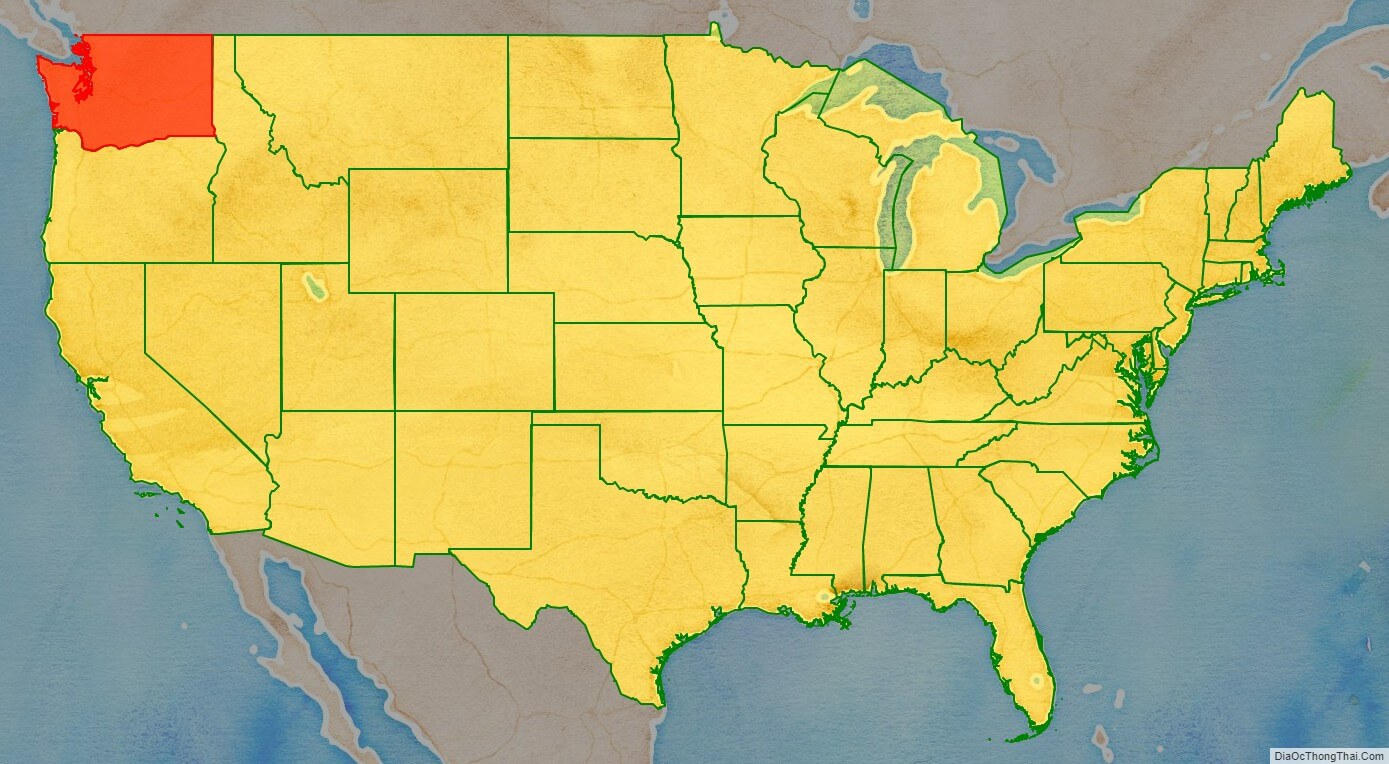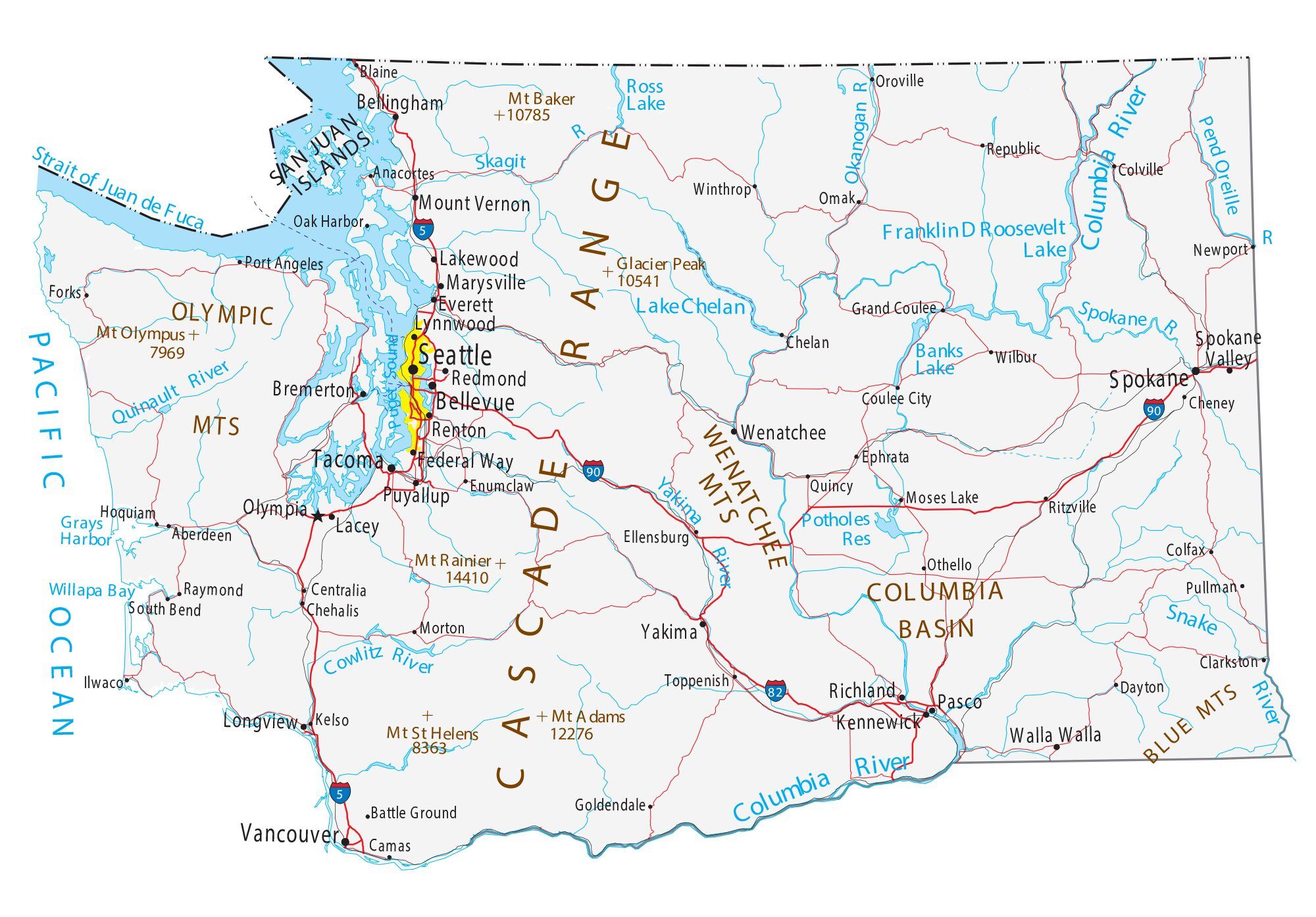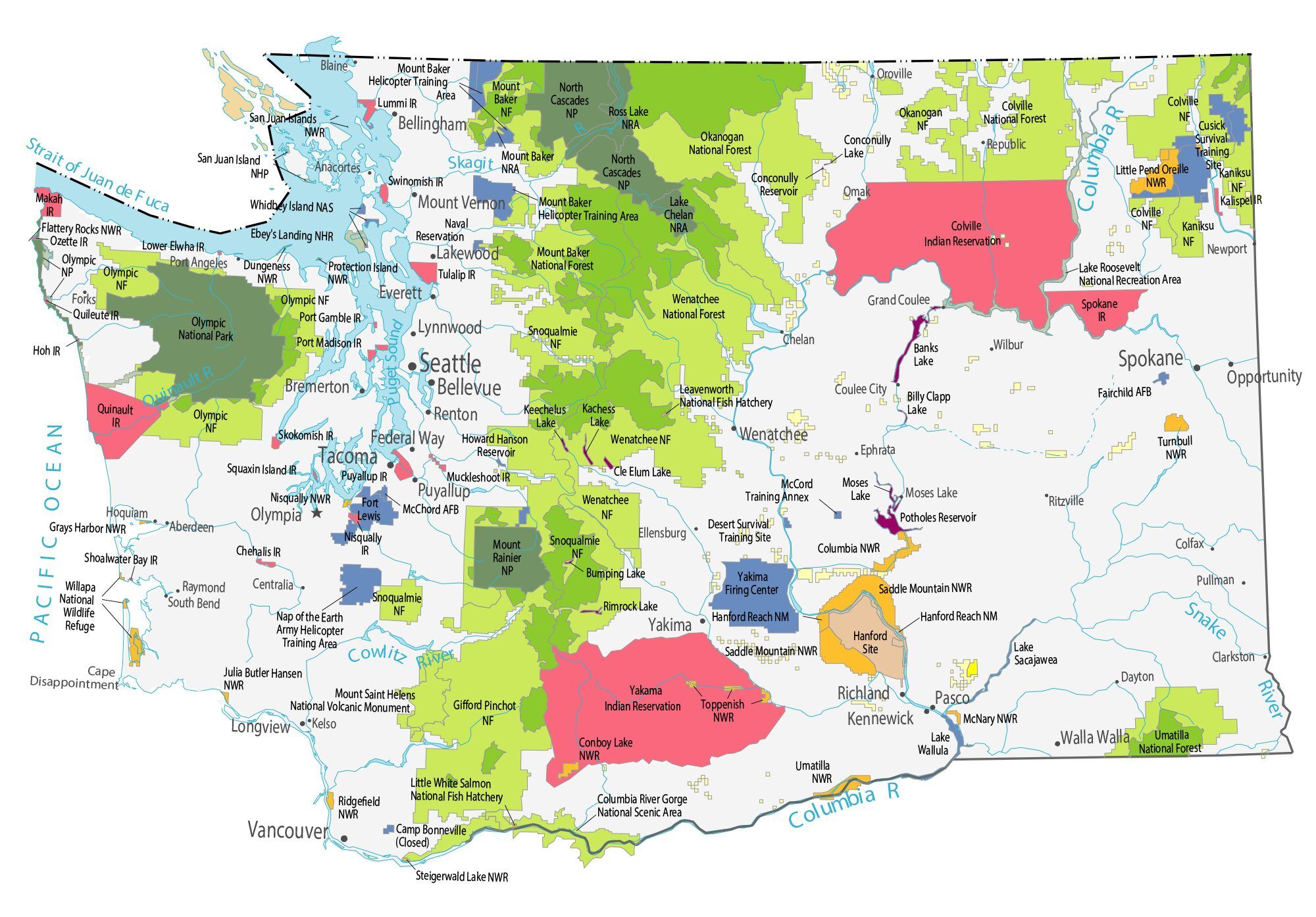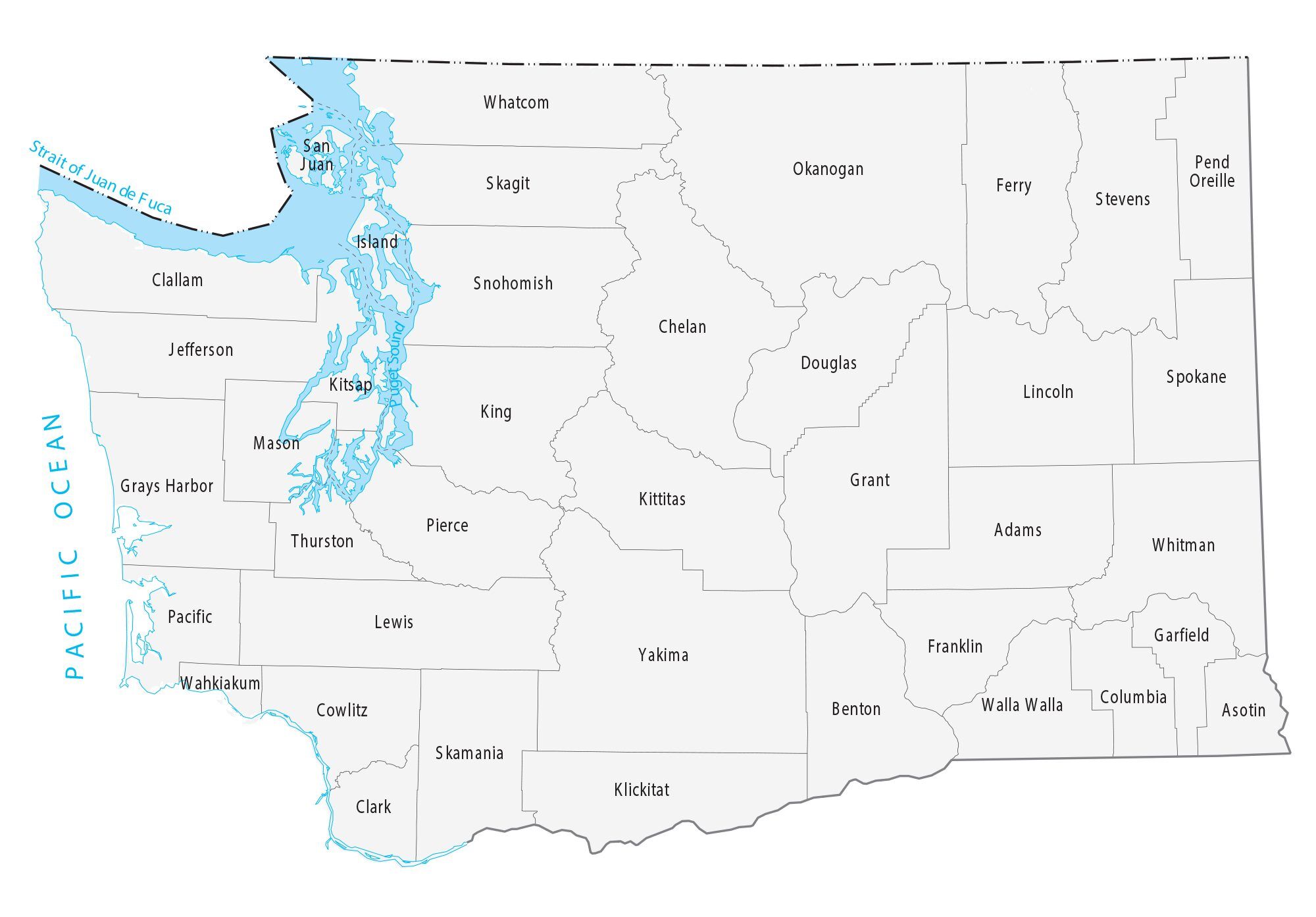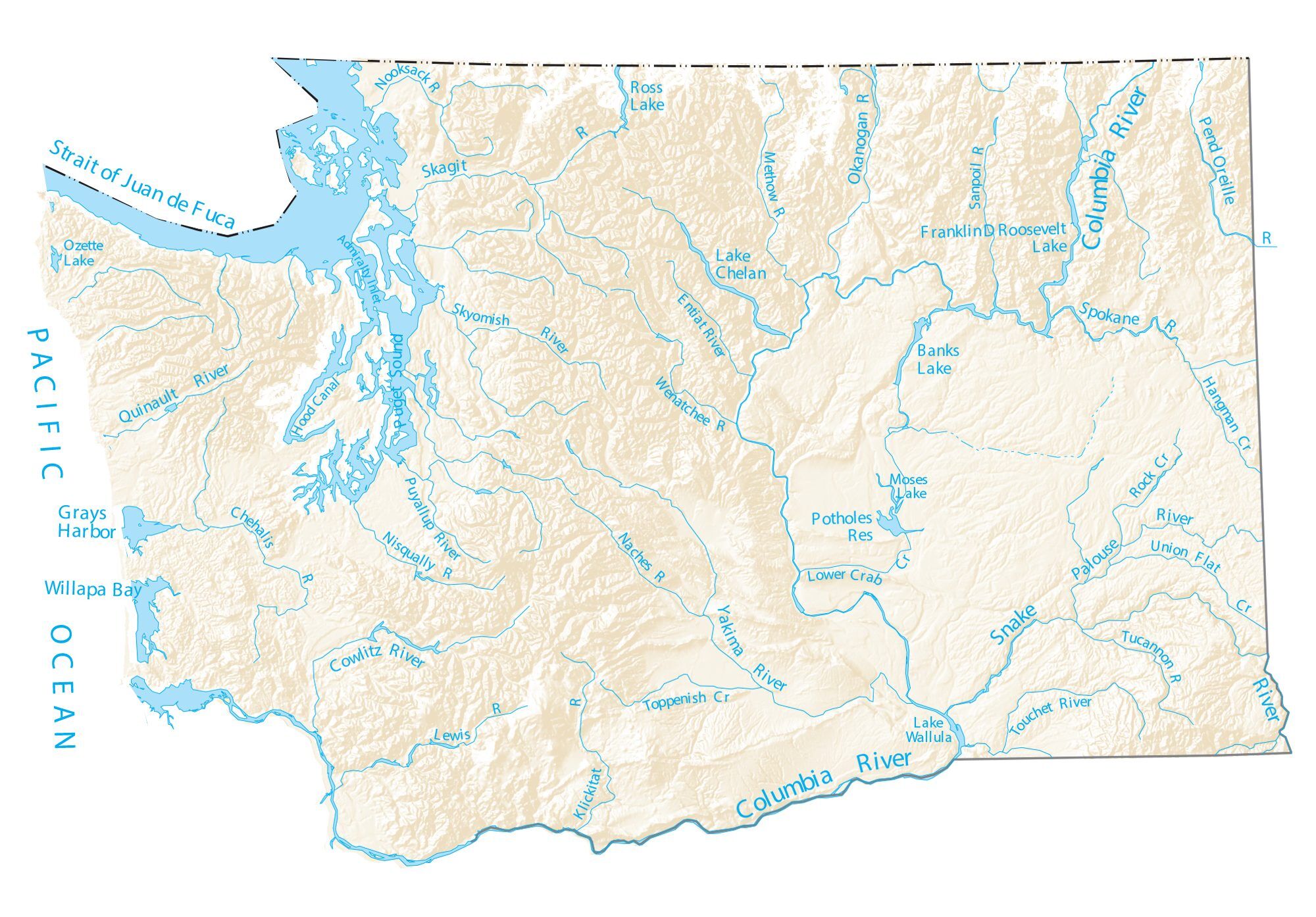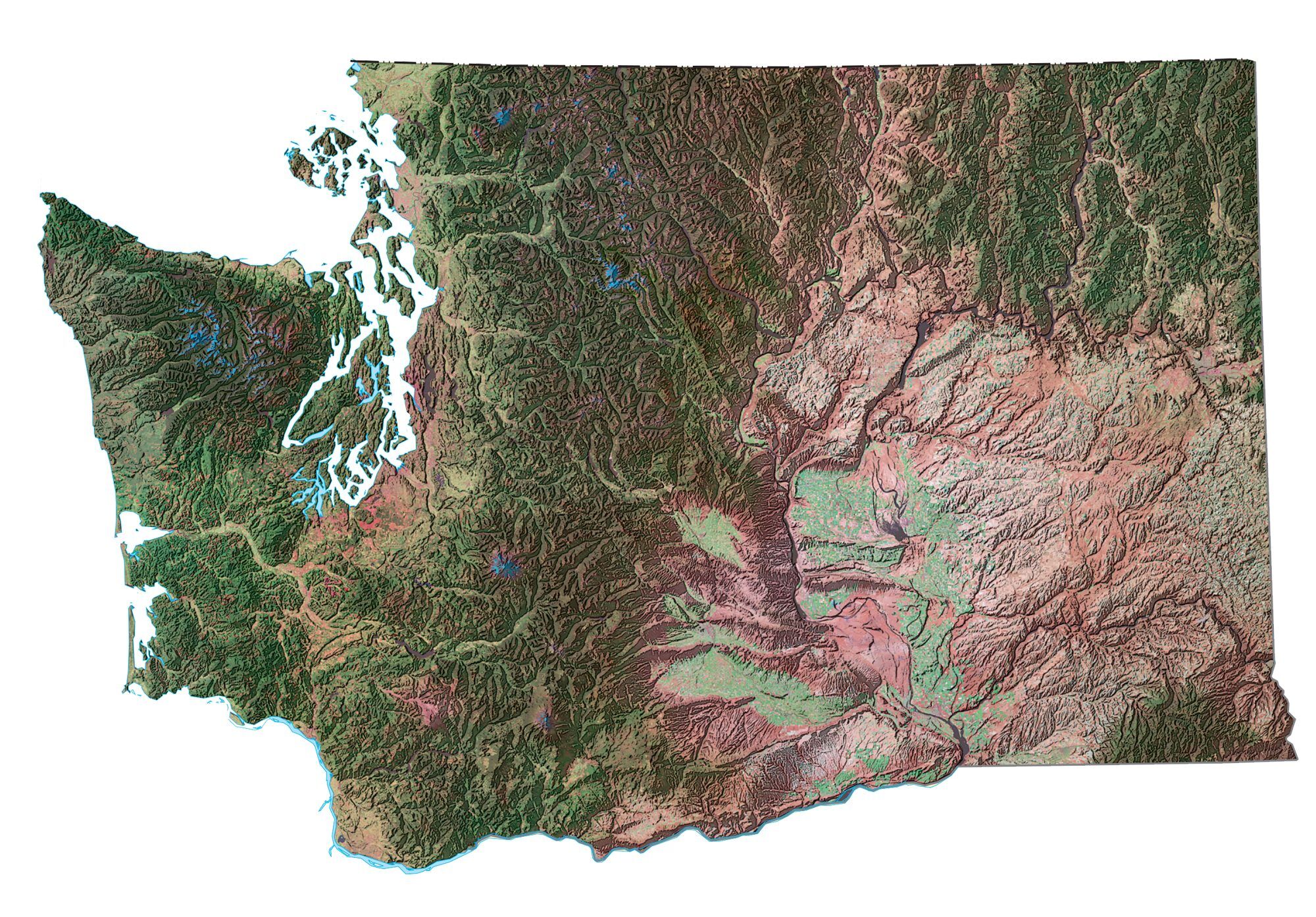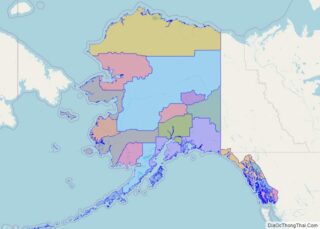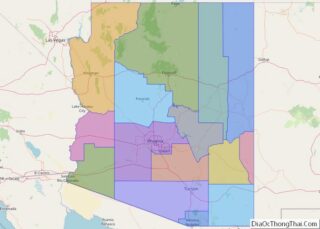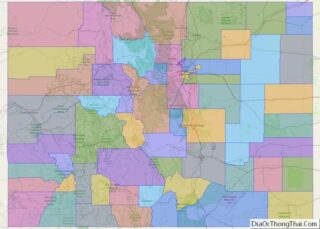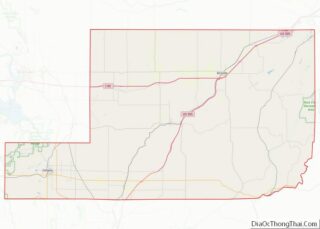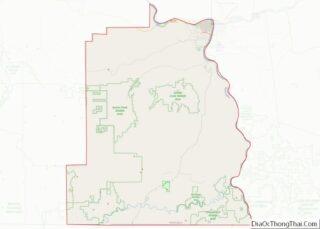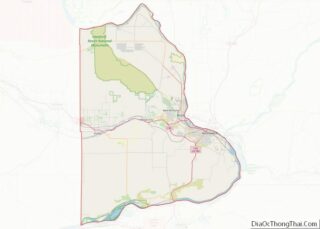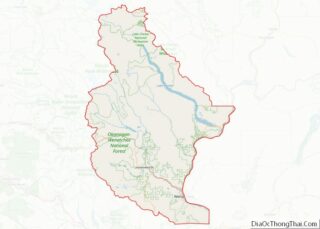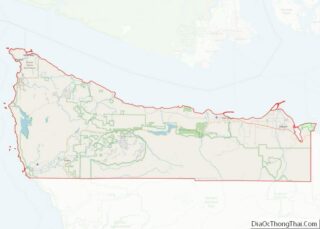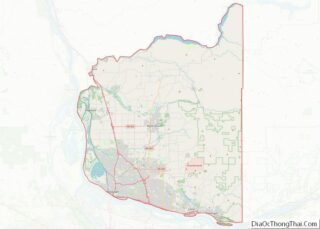Washington (/ˈwɒʃɪŋtən/ (listen)), officially the State of Washington and often referred to as Washington state to distinguish it from the USA’s capital, Washington, D.C., is a state in the Pacific Northwest region of the Western United States. Named for George Washington—the first U.S. president—the state was formed from the western part of the Washington Territory, which was ceded by the British Empire in 1846, by the Oregon Treaty in the settlement of the Oregon boundary dispute. The state is bordered on the west by the Pacific Ocean, Oregon to the south, Idaho to the east, and the Canadian province of British Columbia to the north. It was admitted to the Union as the 42nd state in 1889. Olympia is the state capital; the state’s largest city is Seattle.
Washington is the 18th-largest state, with an area of 71,362 square miles (184,830 km), and the 13th-most populous state, with more than 7.7 million people. The majority of Washington’s residents live in the Seattle metropolitan area, the center of transportation, business, and industry on Puget Sound, an inlet of the Pacific Ocean consisting of numerous islands, deep fjords, and bays carved out by glaciers. The remainder of the state consists of deep temperate rainforests in the west; mountain ranges in the west, central, northeast, and far southeast; and a semi-arid basin region in the east, central, and south, given over to intensive agriculture. Washington is the second most populous state on the West Coast and in the Western United States, after California. Mount Rainier, an active stratovolcano, is the state’s highest elevation at 14,411 feet (4,392 meters), and is the most topographically prominent mountain in the contiguous U.S.
Washington is a leading lumber producer; its rugged surface is rich in stands of Douglas fir, hemlock, ponderosa pine, white pine, spruce, larch, and cedar. The state is the largest producer of apples, hops, pears, blueberries, spearmint oil, and sweet cherries in the U.S., and ranks high in the production of apricots, asparagus, dry edible peas, grapes, lentils, peppermint oil, and potatoes. Livestock, livestock products, and commercial fishing—particularly of salmon, halibut, and bottomfish—are also significant contributors to the state’s economy. Washington ranks second only to California in wine production.
Manufacturing industries in Washington include aircraft, missiles, shipbuilding, and other transportation equipment, food processing, metals, and metal products, chemicals, and machinery. Washington has more than a thousand dams, including the Grand Coulee Dam, built for a variety of purposes including irrigation, electricity generation, flood control, and water storage.
Washington is one of the wealthiest as well as most socially liberal states in the country. The state consistently ranks among the best for life expectancy and low unemployment. Along with Colorado, Washington was one of the first to legalize medicinal and recreational cannabis, was among the first states to legalize same-sex marriage in 2012, and was one of only four U.S. states to have been providing legal abortions on request before the 1973 Supreme Court decision in Roe v. Wade loosened abortion laws nationwide. Similarly, Washington voters approved a 2008 referendum on legalization of physician-assisted suicide, and Washington is currently one of ten states—along with Washington, D.C.—to have legalized the practice.
| Before statehood: | Washington Territory |
|---|---|
| Admitted to the Union: | November 11, 1889 (42nd) |
| Capital: | Olympia |
| Largest city: | Seattle |
| Largest metro and urban areas: | Seattle |
| Elevation: | 1,700 ft (520 m) |
| Total Area: | 71,362 sq mi (184,827 km) |
| Area Rank: | 18th |
| Total Population: | 7,887,965 |
| Population Rank: | 13th |
| Population Density: | 103/sq mi (39.6/km) |
| Population Density Rank: | 25th |
| Median Household Income: | $70,979 (2,017) |
| Income Rank: | 7th |
| Demonym(s): | Washingtonian |
| USPS abbreviation: | WA |
| ISO 3166 code: | US-WA |
| Website: | wa.gov |
Online Interactive Map
Click on ![]() to view map in "full screen" mode.
to view map in "full screen" mode.
Washington location map. Where is Washington state?
Washington Road Map
Washington Map – Roads & Cities
Washington Street Map
History
Early history
The 9,300-year-old skeletal remains of Kennewick Man, one of the oldest and most complete human remains found in North America, were discovered in Washington in the 1990s. The area has been known to host megathrust earthquakes in the past, the last being the Cascadia earthquake of 1700. Before the arrival of Europeans, the region had many established tribes of indigenous peoples, notable for their totem poles and their ornately carved canoes and masks. Prominent among their industries were salmon fishing and, notably among the Makah, whale hunting. The peoples of the Interior had a different subsistence-based culture based on hunting, food-gathering and some forms of agriculture, as well as a dependency on salmon from the Columbia and its tributaries. The smallpox epidemic of the 1770s devastated the Native American population.
European exploration
The first recorded European landing on the Washington coast was by Spanish Captain Don Bruno de Heceta in 1775, on board the Santiago, part of a two-ship flotilla with the Sonora. He claimed the coastal lands up to Prince William Sound for Spain as part of their claimed rights under the Treaty of Tordesillas, which they maintained made the Pacific a “Spanish lake” and all its shores part of the Spanish Empire.
In 1778, British explorer Captain James Cook sighted Cape Flattery, at the entrance to the Strait of Juan de Fuca, but Cook did not realize the strait existed. It was not discovered until Charles William Barkley, captain of the Imperial Eagle, sighted it in 1787. The straits were further explored by Spanish explorers Manuel Quimper in 1790 and Francisco de Eliza in 1791, and British explorer George Vancouver in 1792.
European settlement
The British–Spanish Nootka Convention of 1790 ended Spanish claims of exclusivity and opened the Northwest Coast to explorers and traders from other nations, most notably Britain and Russia as well as the fledgling United States. American captain Robert Gray (for whom Grays Harbor County is named) then discovered the mouth of the Columbia River. He named the river after his ship, the Columbia. Beginning in 1792, Gray established trade in sea otter pelts. The Lewis and Clark Expedition entered the state on October 10, 1805.
Explorer David Thompson, on his voyage down the Columbia River, camped at the confluence with the Snake River on July 9, 1811, and erected a pole and a notice claiming the territory for Great Britain and stating the intention of the North West Company to build a trading post at the site.
Britain and the United States agreed to what has since been described as “joint occupancy” of lands west of the Continental Divide to the Pacific Ocean as part of the Anglo–American Convention of 1818, which established the 49th Parallel as the international boundary west from Lake of the Woods to the Rocky Mountains. Resolution of the territorial and treaty issues west to the Pacific was deferred until a later time. In 1819, Spain ceded their rights north of the 42nd Parallel to the United States.
Negotiations with Great Britain over the next few decades failed to settle upon a compromise boundary and the Oregon boundary dispute was highly contested between Britain and the United States. Disputed joint occupancy by Britain and the U.S. lasted for several decades. With American settlers pouring into Oregon Country, Hudson’s Bay Company, which had previously discouraged settlement because it conflicted with the fur trade, reversed its position in an attempt to maintain British control of the Columbia District.
Fur trapper James Sinclair, on orders from Sir George Simpson, Governor of the Hudson’s Bay Company, led some 200 settlers from the Red River Colony west in 1841 to settle on Hudson Bay Company farms near Fort Vancouver. The party crossed the Rockies into the Columbia Valley, near present-day Radium Hot Springs, British Columbia, then traveled south-west down the Kootenai River and Columbia River. Despite such efforts, Britain eventually ceded all claims to land south of the 49th parallel to the United States in the Oregon Treaty on June 15, 1846.
In 1836, a group of missionaries, including Marcus Whitman, established several missions and Whitman’s own settlement Waiilatpu, in what is now southeastern Washington state, near present-day Walla Walla County, in the territory of both the Cayuse and the Nez Perce Indian tribes. Whitman’s settlement would in 1843 help the Oregon Trail, the overland emigration route to the west, get established for thousands of emigrants in the following decades. Marcus provided medical care for the Native Americans, but when Indian patients—lacking immunity to new, “European” diseases—died in striking numbers, while at the same time many white patients recovered, they held “medicine man” Marcus Whitman personally responsible, and murdered Whitman and twelve other white settlers in the Whitman massacre in 1847. This event triggered the Cayuse War between settlers and Indians.
Fort Nisqually, a farm and trading post of the Hudson’s Bay Company and the first European settlement in the Puget Sound area, was founded in 1833. Black pioneer George Washington Bush and his Caucasian wife, Isabella James Bush, from Missouri and Tennessee, respectively, led four white families into the territory and founded New Market, now Tumwater, in 1846. They settled in Washington to avoid Oregon‘s Black Exclusion Law, which prohibited African Americans from entering the territory while simultaneously prohibiting slavery. After them, many more settlers, migrating overland along the Oregon Trail, wandered north to settle in the Puget Sound area.
Spanish and Russian claims to the region were ceded in the early 19th century through a series of treaties. The Spanish signed the Adams–Onís Treaty of 1819, and the Russians the Russo-American Treaty of 1824 and 1825.
The Oregon Question remained contested between the United Kingdom and the United States until the 1846 Oregon Treaty established the border between British North America and the United States along the 49th parallel until the Strait of Georgia. Vague wording in the treaty left the ownership of the San Juan Islands in doubt; during the so-called Pig War, both nations agreed to a joint military occupation of the islands. Kaiser Wilhelm I of the German Empire was selected as an arbitrator to end the dispute, with a three-man commission ruling in favor of the United States in 1872. The border established by the Oregon Treaty and finalized by the arbitration in 1872 remains the boundary between Washington and British Columbia.
Statehood
The growing population of Oregon Territory north of the Columbia River formally requested a new territory. As a result of the Monticello Convention, held in present-day Cowlitz County, U.S. Congress passed legislation and President Millard Fillmore signed into law on March 2, 1853, the creation of a new Washington Territory. The boundary of Washington Territory initially extended farther east than the present state, including what is now the Idaho Panhandle and parts of western Montana, and picked up more land to the southeast that was left behind when Oregon was admitted as a state; the creation of Idaho Territory in 1863 established the final eastern border. A Washington state constitution was drafted and ratified in 1878, but it was never officially adopted. Although never approved by the United States Congress, the 1878 constitution is an important historical document that shows the political thinking of the time; it was used extensively during the drafting of Washington state’s 1889 constitution, the one and only official Constitution of the State of Washington. Washington became the 42nd state of the United States on November 11, 1889.
Early prominent industries in the new state included agriculture and lumber. In Eastern Washington, the Yakima River Valley became known for its apple orchards, while the growth of wheat using dry farming techniques became particularly productive. Heavy rainfall to the west of the Cascade Range produced dense forests, and the ports along Puget Sound prospered from the manufacturing and shipping of lumber products, particularly the Douglas fir. Other industries that developed in the state included fishing, salmon canning and mining.
Post–statehood
For a long period, Tacoma had large smelters where gold, silver, copper, and lead ores were treated. Seattle was the primary port for trade with Alaska and the rest of the country, and for a time, it possessed a large shipbuilding industry. The region around eastern Puget Sound developed heavy industry during the period including World War I and World War II, and the Boeing company became an established icon in the area.
During the Great Depression, a series of hydroelectric dams were constructed along the Columbia River as part of a project to increase the production of electricity. This culminated in 1941 with the completion of the Grand Coulee Dam, the largest concrete structure in the United States and the largest dam in the world at its construction.
During World War II, the state became a focus for war industries. While the Boeing Company produced many heavy bombers, ports in Seattle, Bremerton, Vancouver, and Tacoma were available for the manufacture of warships. Seattle was the point of departure for many soldiers in the Pacific, several of whom were quartered at Fort Lawton, which later became Discovery Park. In Eastern Washington, the Hanford Works atomic energy plant was opened in 1943 and played a major role in the construction of atomic bombs.
After the end of World War II, and with the beginning of the civil rights movement, the state’s growing Black or African American population’s wages were 53% above the national average. The early diversification of Washington through the Great Migration led to successful efforts at reducing discrimination in the workplace. In 1950, Seattle’s first black representative for the state’s legislature was elected. At the 1970 U.S. census, the black population grew to 7.13% of the total population.
In 1970, the state was one of only four U.S. states to have been providing legal abortions before the 1973 Supreme Court decision in Roe v. Wade which loosened abortion laws nationwide.
On May 18, 1980, following a period of heavy tremors and small eruptions, the north face of Mount St. Helens slid off in the largest landslide in recorded history before erupting violently, destroying a large part of the top of the volcano. The eruption flattened the forest up to 20 km north of the volcano, killed 57 people, flooded the Columbia River and its tributaries with ash and mud, and blanketed large parts of Washington eastward and other surrounding states in ash, making day look like night.
Washington State Map – Places and Landmarks
Washington Political Map
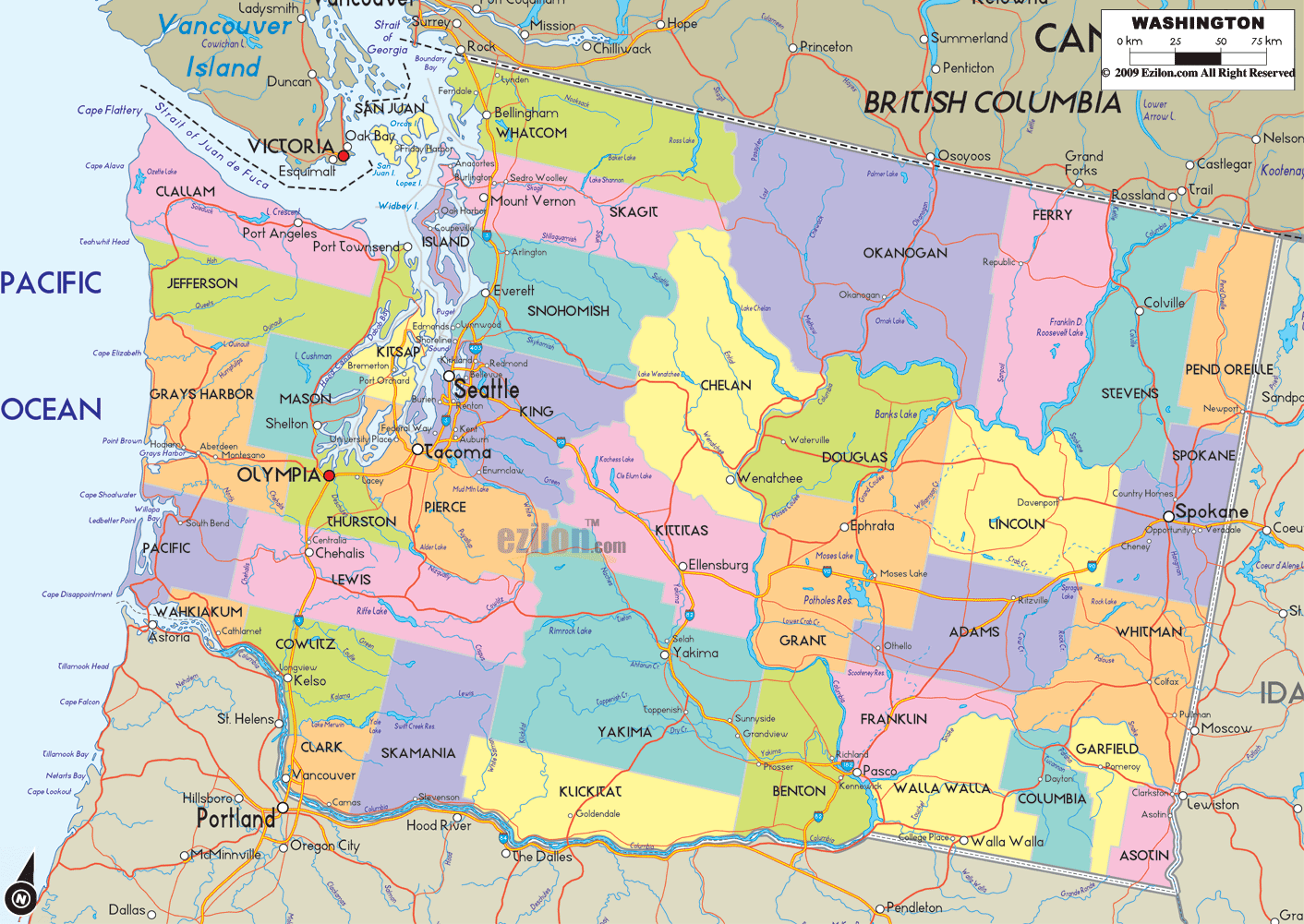
Washington Lakes and Rivers Map
Washington Physical Map
Washington Topographic Map
Washington Satellite Map
Others printable maps
Washington Outline Map
Blank Washington County Map
See also
Map of Washington State and its subdivision:- Adams
- Asotin
- Benton
- Chelan
- Clallam
- Clark
- Columbia
- Cowlitz
- Douglas
- Ferry
- Franklin
- Garfield
- Grant
- Grays Harbor
- Island
- Jefferson
- King
- Kitsap
- Kittitas
- Klickitat
- Lewis
- Lincoln
- Mason
- Okanogan
- Pacific
- Pend Oreille
- Pierce
- San Juan
- Skagit
- Skamania
- Snohomish
- Spokane
- Stevens
- Thurston
- Wahkiakum
- Walla Walla
- Whatcom
- Whitman
- Yakima
- Alabama
- Alaska
- Arizona
- Arkansas
- California
- Colorado
- Connecticut
- Delaware
- District of Columbia
- Florida
- Georgia
- Hawaii
- Idaho
- Illinois
- Indiana
- Iowa
- Kansas
- Kentucky
- Louisiana
- Maine
- Maryland
- Massachusetts
- Michigan
- Minnesota
- Mississippi
- Missouri
- Montana
- Nebraska
- Nevada
- New Hampshire
- New Jersey
- New Mexico
- New York
- North Carolina
- North Dakota
- Ohio
- Oklahoma
- Oregon
- Pennsylvania
- Rhode Island
- South Carolina
- South Dakota
- Tennessee
- Texas
- Utah
- Vermont
- Virginia
- Washington
- West Virginia
- Wisconsin
- Wyoming
